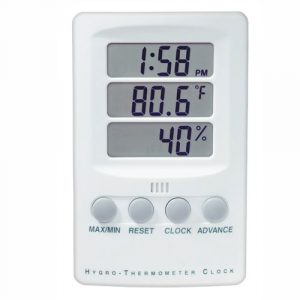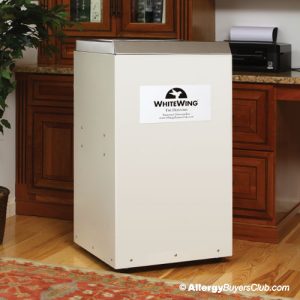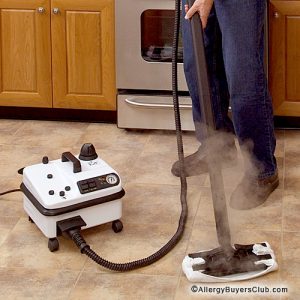Mold Cleaning Tips
Mold Exposure Symptoms
The health problems that occur as a result of mold can be felt sometimes can be felt immediately (acute) or can be longer term (chronic). The immediate problems that are often associated with exposure to high levels of mold include the following:
- Mild or severe headaches
- Itching eyes and breathing difficulties
- Difficulty in concentration.
If someone removes himself or herself from the mold source in what usually is known as a sick building these symptoms usually disappear shortly thereafter.
There are also chronic conditions, which are associated with high levels of mold exposure. These are often quite difficult to diagnose and patients have often been accused of hypochondria. These chronic conditions include:
- Asthma
- Allergic Rhinitis
- Pneumonia
What is disturbing is that these conditions may not go away immediately or ever even after the person is removed from the mold source and indeed their condition may even worsen. The mycotoxins emitted by mold spores have been postulated to be particularly toxic and research is currently underway to pinpoint the disease and mycotoxin link.
How do you know you might have mold?
A quick visual tour of your house might give you some clues
- Are there any musty smells especially in the basement?
- Is their any visible mold growing in bathrooms, window sills, books, shoes or walls?
- Are there water stains on the ceiling or walls?
- Is there peeling paint? This often occurs after intense condensation.
- Are the wood floors warping?
Preventing Mold Growth
Conventional wisdom recommends opening the windows to increase ventilation this well may not be enough to eliminate or prevent mold from growing.

- The outside air may well be more humid and increase the indoor humidity.
- The outdoor air at certain times of the year is laden with additional mold.
- Your first line of defense is check your home for all leaks sources – roof, gutter, plumbing and drainage problems.
- Use exhaust fans both in bathrooms and kitchen and keep those fans running for 10 to 15 minutes after cooking or bathing.
- We recommend keeping the indoor humidity at about 50%, which is below the threshold
where most molds are known to flourish. Monitor moisture levels with a hygrometer. - Use a low temperature dehumidifier in your basement to keep mold at bay. Basements are notorious as mold breeding grounds.
- While prevention is better than cure, room hepa air purifiers, air sterilizers and high-efficiency furnace filters will catch the remaining mold spores.
Household Mold Cleaning Tips
House Mold Cleaning:
- Keep a clean house and use hepa vacuums and steam cleaners is the best way to achieve that goal.
- An exhaust fan in a crawl space or basement during warm weather is helpful. Dehumidification is even better.
- It is critically important for you to clean out your humidifier, air conditioner and dehumidifier according to manufacturer instructions. Some humidifiers are more vulnerable to producing the conditions for mold spore production so choose carefully.
- Central vacuuming is the most healthful way to vacuum since all the dirt is exhausted out doors, which helps with reducing the spread of indoor pollutants. A high efficiency disposable vacuum bag is the most effective and healthful way to collect particulates.We have found that we are healthier without houseplants, which tend to have molds in the potting soil.
- Always vent your clothes dryer to the outside.
- Wet laundry evaporates and puts moisture into the air, so do not hang it to dry inside.
Moldy Kitchen:
- Clean your refrigerator drip pan and rubber sealing gaskets so that mold does not grow where condensate forms. Vapor steam cleaners are especially helpful as a tool here.
- Cooking pots should be covered so as to contain steam, which can increase humidity the basic conditions for mold.
Moldy Bathroom:
- Try to avoid carpets in your bathrooms and use title. If you have bath mats wash them in very hot water on a regular basis.
- Mold in bathrooms can be kept at bay with the diligent use of steam cleaners, which kills mold growth.
- Buy mold resistant shower curtains or clean the runners in the shower doors, which is a hiding place for mold.
Moldy Basement:

- Avoid using carpeting in your basement. Sooner or later you will either have a flood from the outside or a water heater will break. Either way you will end up having to throw that carpet out.
- We believe that bare earth basement floors are mold problems waiting to happen. At the very least cover the area with a heavy plastic vapor barrier. Better yet use a dehumidifier and put concrete on the floor.
- Using an air conditioner in summer definitely reduces the humidity in your home but a dehumidifier is much more energy efficient.
- It is important to heat all the rooms in your house during winter to prevent mold growth especially the basement where condensation is likely to form on cold walls and floors.
Housing Materials
- Replace insulation materials, which have become wet and choose allergen friendly materials.
- If you are building a new house and have damp or green lumber some way for the lumber to dry out is essential. The most forward thinking builders are now using a dehumidifier during the construction process. A responsible builder will also recommend you use a dehumidifier after construction as the concrete will “sweat” in a new building.
- Triple or double thermo paned windows help with preventing condensation which gives rise to mold growth conditions. A storm window works best when installed on the inside.
For additional product information on mold remediation products go to our Mold Solution Center and for more informational articles go to our Mold Center.






